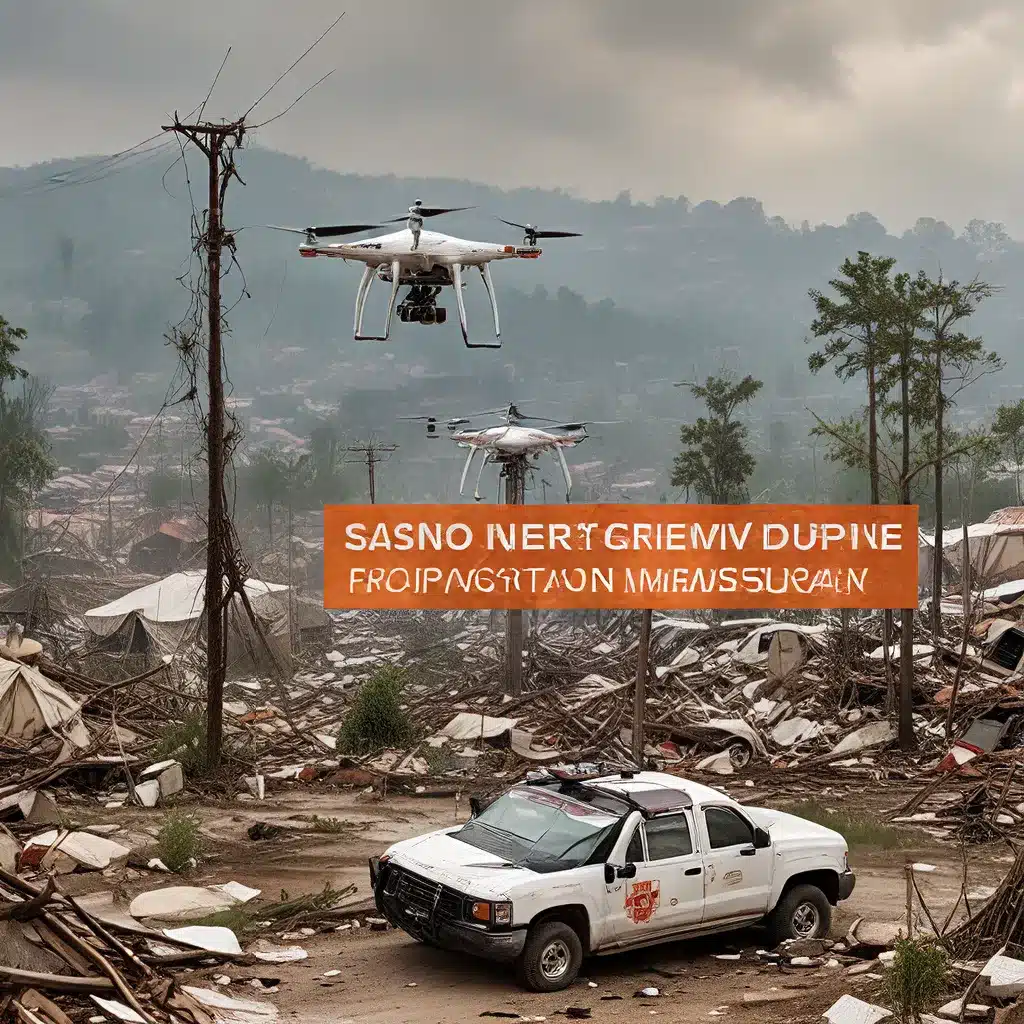
The Crucial Role of Sensor Networks in Disaster Management
Sensor networks have emerged as a vital technology in the realm of disaster response and mitigation. These interconnected systems of sensors, communication devices, and data processing units have the capacity to revolutionize how we prepare for, respond to, and recover from natural and man-made disasters. By providing real-time, granular data on environmental conditions, infrastructure status, and human movements, sensor networks enable enhanced situational awareness and rapid decision-making during crisis situations.
At the heart of this transformative technology lies the ability to collect, analyze, and disseminate critical information in a timely manner. Sensor networks can be deployed across a wide range of environments, from urban centers to remote rural areas, to monitor a multitude of parameters, such as temperature, humidity, seismic activity, flood levels, and air quality. This comprehensive data-gathering capability empowers emergency responders, disaster management agencies, and policymakers to make informed decisions, allocate resources effectively, and coordinate relief efforts efficiently.
Enhancing Disaster Preparedness and Early Warning Systems
One of the key applications of sensor networks in disaster management is the development of robust early warning systems. By strategically placing sensors in areas prone to natural disasters, such as earthquake-prone regions, flood-prone areas, or regions vulnerable to wildfires, sensor networks can detect the onset of a disaster, often before it becomes evident to human observers. This early detection capability enables authorities to trigger timely alerts, mobilize response teams, and initiate evacuation procedures, potentially saving countless lives and minimizing the impact of a disaster.
Moreover, the continuous monitoring and data collection enabled by sensor networks can help identify patterns and trends that could inform long-term disaster mitigation strategies. Historical data gathered from sensor networks can be analyzed to pinpoint high-risk areas, assess the effectiveness of existing disaster response plans, and develop predictive models to anticipate the likelihood and severity of future events. This proactive approach to disaster management allows for the implementation of preventive measures, such as infrastructure reinforcement, land-use planning, and the deployment of early warning systems, all of which contribute to enhancing overall community resilience.
Optimizing Disaster Response and Coordination
When a disaster strikes, sensor networks play a crucial role in providing real-time situational awareness to emergency responders. By monitoring the status of critical infrastructure, such as roads, bridges, power grids, and water systems, sensor networks can help identify damage and disruptions, enabling responders to prioritize and coordinate their efforts effectively. This enhanced visibility into the disaster environment allows for the efficient allocation of resources, the identification of safe evacuation routes, and the coordination of rescue operations.
Furthermore, sensor networks can be integrated with advanced analytics and decision-support systems to generate actionable insights for disaster response teams. Predictive algorithms can forecast the trajectory and impact of disasters, while automated data processing can provide rapid assessments of the situation on the ground. This data-driven decision-making empowers emergency personnel to make informed choices, deploy resources strategically, and adapt their response plans as the situation evolves.
Ensuring Resilient and Sustainable Sensor Networks
As sensor networks become increasingly integral to disaster management, it is crucial to address the challenges of network resilience and energy efficiency. Sensor nodes deployed in disaster-prone areas must be able to withstand harsh environmental conditions, maintain uninterrupted connectivity, and continue to operate even in the face of power outages or infrastructure failures.
Strategies for enhancing sensor network resilience include the use of redundant communication channels, energy-harvesting technologies, and self-healing network architectures. By leveraging renewable energy sources, such as solar or wind power, sensor nodes can be made energy-independent and less reliant on fragile power grids. Additionally, mesh networking and decentralized communication protocols can ensure that sensor data can be reliably transmitted and shared, even when individual nodes or communication links fail.
Securing Sensor Networks Against Cyber Threats
The proliferation of sensor networks in disaster management also raises important cybersecurity considerations. As these systems become increasingly interconnected and reliant on digital infrastructure, they become vulnerable to cyber threats, such as hacking, data manipulation, and malicious disruptions. Securing sensor networks against such threats is critical to maintaining the integrity and reliability of the data they provide during emergencies.
Robust encryption algorithms, access control mechanisms, and anomaly detection systems are essential for safeguarding sensor networks. Furthermore, regular software updates, vulnerability assessments, and incident response planning can help mitigate the risks associated with cyber threats. By prioritizing cybersecurity in the design and deployment of sensor networks, disaster management authorities can ensure that critical data and communication channels remain secure and resilient.
Embracing the Future of Sensor Networks in Disaster Management
As the Internet of Things (IoT) and Industry 4.0 continue to transform various sectors, the role of sensor networks in disaster management is poised to become even more pivotal. The integration of advanced analytics, machine learning, and artificial intelligence with sensor networks can unlock new capabilities, such as predictive modeling, automated decision-making, and intelligent resource allocation.
Moreover, the convergence of sensor networks with emerging technologies, such as 5G communication, unmanned aerial vehicles (UAVs), and satellite-based monitoring, can further enhance the spatial coverage, data resolution, and real-time responsiveness of disaster management systems. By embracing these technological advancements, disaster management authorities can stay at the forefront of innovation and better protect communities from the devastating impacts of natural and man-made disasters.
In conclusion, sensor networks have become an indispensable tool in the realm of disaster response and mitigation. By providing comprehensive data, enhanced situational awareness, and data-driven decision support, these interconnected systems have the potential to revolutionize the way we prepare for, respond to, and recover from disasters. As the technology continues to evolve, it is crucial for disaster management stakeholders to invest in the development, deployment, and maintenance of resilient and secure sensor networks, ensuring that communities are better equipped to withstand and overcome the challenges posed by emergencies.